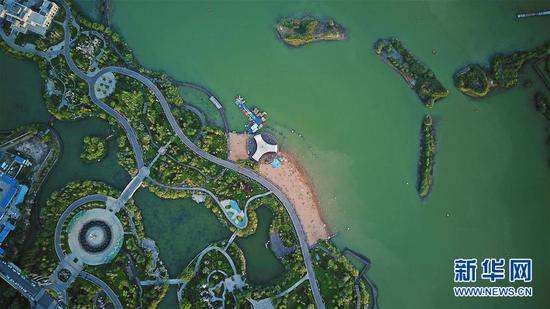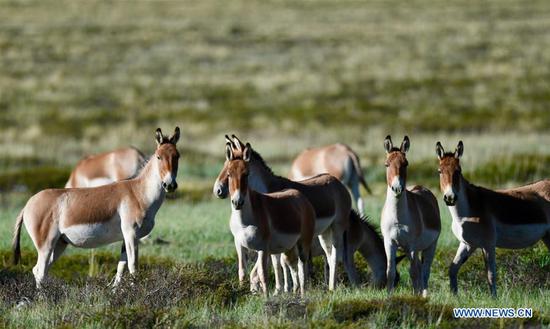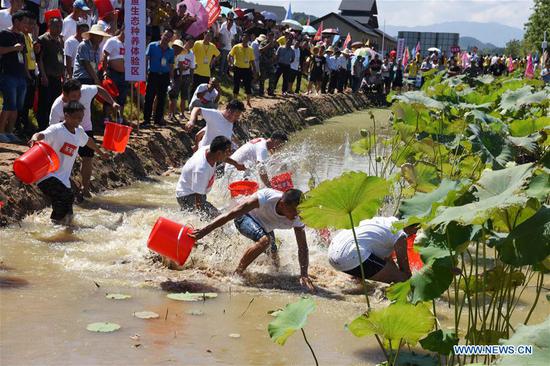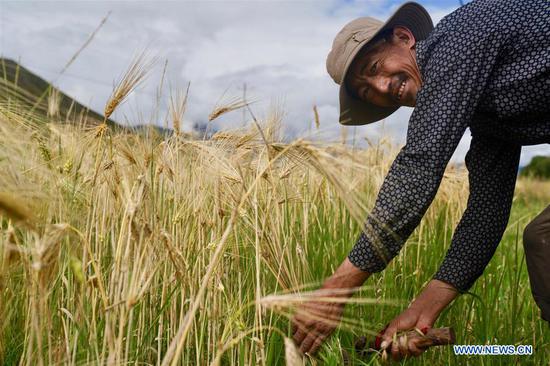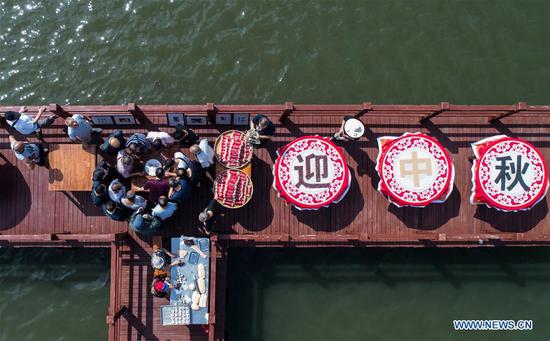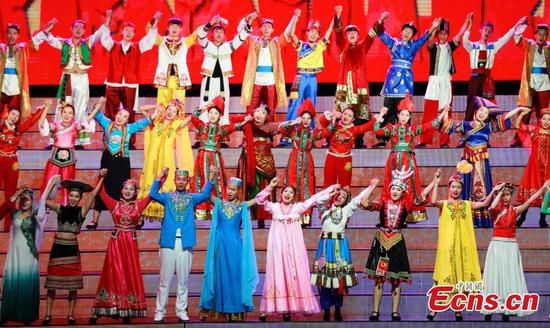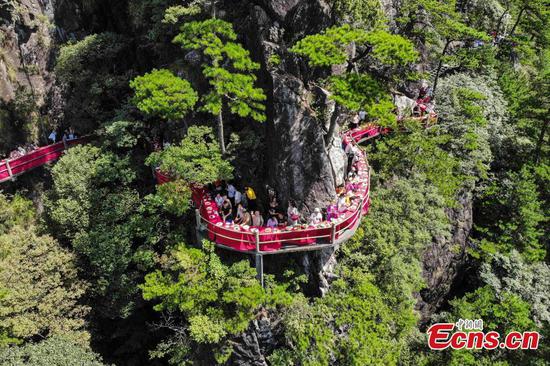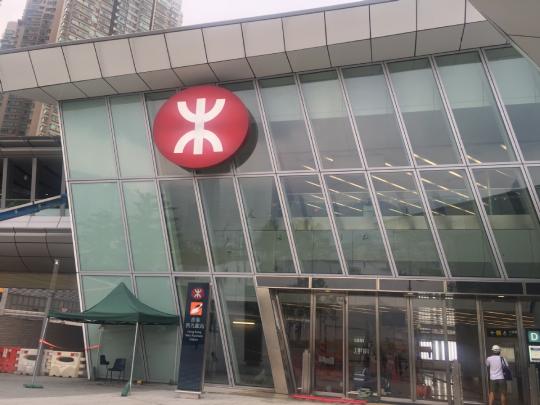
The Hong Kong West Kowloon Station is seen in this photo taken on Aug 21, 2018. (Photo by Guo Rong/chinadaily.com.cn)
Chief Executive of China's Hong Kong Special Administrative Region (HKSAR) Carrie Lam has highlighted the significance of the Hong Kong section of the Guangzhou-Shenzhen-Hong Kong highspeed rail, which is to be launched on Sunday.
"The Hong Kong section of the Guangzhou-Shenzhen-Hong Kong highspeed rail is only 26 kilometers long, but it links Hong Kong into the 25,000-kilometer national highspeed rail network. The linking is of great importance," Lam said in an interview with Xinhua.
During the interview at the Office of the HKSAR Chief Executive, Lam talked about her personal experience of traveling for three hours by highspeed train from Shenzhen in southern Guangdong Province to Guilin in southwest Guangxin Zhuang Autonomous Region for holiday.
"I like traveling by highspeed rail very much, because I can do many things on the train and it is comfortable to ride a highspeed train," she said.
Upon the commissioning of the Hong Kong section of the highspeed rail, passengers can travel from Hong Kong's West Kowloon Station directly to 44 destinations in the Chinese mainland, including six short-haul destinations in Guangdong Province and 38 long-haul destinations in other provinces or cities.
This, according to Lam, "really makes it far more convenient" for people in Hong Kong to travel.
"You can imagine that in future there will still be roughly three hours from West Kowloon Terminus directly to Guilin, and I don't need to get off the train and board another train in order to reach the destination," Lam said.
"That's my personal experience, and I'm sure many people in Hong Kong will particularly favor and prefer using highspeed train for this sort of distance. So traveling to Guilin, Kunming and Xiamen will be very convenient in future."
Besides boosting tourism in both Hong Kong and the Chinese mainland, Lam said the significance of the highspeed rail link "takes many forms"- It will be more convenient for Hong Kong businessmen to travel to the Chinese mainland for business activities, as well as for an increasing number of Hong Kong young people who go to the Chinese mainland for study or work.
The highspeed train will also be a travel choice for Lam in her future visits to many cities in the Chinese mainland, especially cities that are relatively r to Hong Kong.
"I often go to Shenzhen for meetings, and it will only take less than 20 minutes to travel by highspeed train from West Kowloon to Futian Station in Shenzhen, probably less than it will cost when I go from here to my other office in Hong Kong."
"The significance and attraction of the high speed rail, as far as I understand, is more for a sort of medium of journeys," she said.
Besides promoting Hong Kong's economic development and improving people's livelihood, "in a way you can say that it shortens the distance between the two places and between people and communities of the two places. I'm expecting there will be far more exchanges, cooperation in all respects with the commencement of the highspeed trains."
To unleash the full benefits of the highspeed rail for future passengers, a co-location arrangement has been applied at West Kowloon Station to speed up cross-border passengers' journeys. Both Hong Kong and the Chinese mainland port areas have been set up at the station, which allows one-stop clearance procedures for passengers to save their time.
On July 25, 2017, the HKSAR announced to implement the co-location arrangement at the West Kowloon Station by adopting a "three-step process," including reaching a cooperation arrangement with the Chinese mainland, having the cooperation arrangement endorsed by the Standing Committee of the National People's Congress, and completing local legislation on the co-location arrangement. In less than a year, the three steps were finished and the co-location arrangement was implemented.
"Without the co-location arrangement, the highspeed rail might fail to provide maximum benefits to the whole society," Lam said, "To achieve this desirable goal, we have to face up to difficulties."
Having strong confidence in the co-location arrangement at West Kowloon Station, Lam said: "The most important thing is, rather than by administrative means, the co-location arrangement is implemented through legislative process and therefore is supported by sound legal basis."
On the future operation of the highspeed rail, Lam pointed out that since the Hong Kong section is a part of the national highspeed rail network, the coordination between Hong Kong and the Chinese mainland railway operators is very important.
"According to our experience in the construction, trial operation and ticket pre-sales of the Hong Kong section of highspeed rail, we can confidently say that the two sides have established an effective mechanism for communication and coordination," she said.
At least two more large-scale cross-border infrastructure construction projects are about to be completed between Hong Kong and the Chinese mainland - the Hong Kong-Zhuhai-Macao Bridge in the west of the Hong Kong SAR and Liantang/Heung Yuen Wai Boundary Control Point in the northeast of the Hong Kong SAR.
Lam expects the two projects, together with the upcoming highspeed rail link, will help form a "one-hour living circle" around Hong Kong and enhance Hong Kong's position in the Guangdong-Hong Kong-Macao Greater Bay Area, so that Hong Kong can "be better integrated into the national development."














